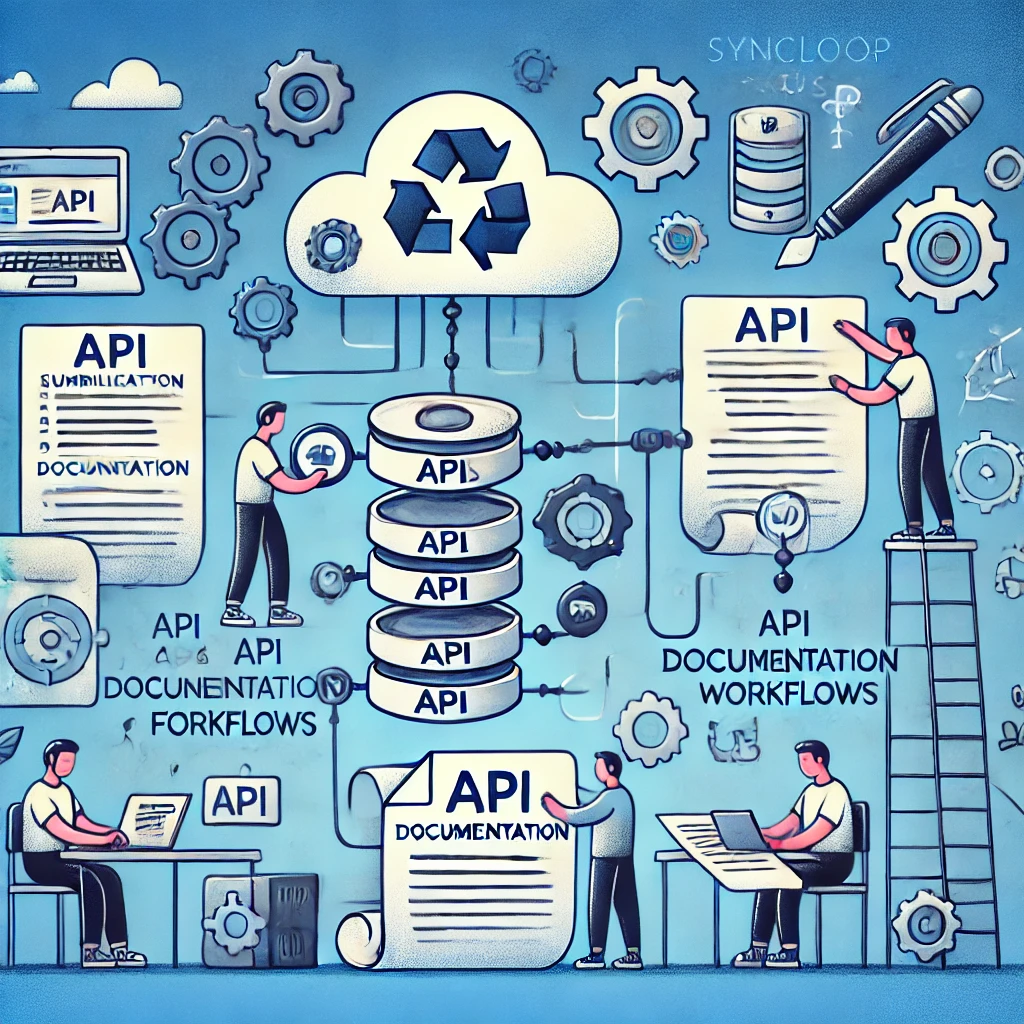Simplifying API Documentation Workflows with Syncloop Automation Features

Syncloop provides automation tools to streamline API documentation workflows, enabling teams to create, update, and maintain high-quality documentation effortlessly. This blog explores how Syncloop enhances API documentation workflows and shares best practices for automating this critical process.
The Importance of API Documentation
High-quality API documentation benefits organizations by:
- Accelerating Integration: Helping developers understand and integrate APIs quickly.
- Reducing Support Costs: Minimizing the need for extensive support by providing clear guidance.
- Enhancing Developer Experience: Offering intuitive resources for developers to work efficiently.
- Ensuring Consistency: Maintaining up-to-date documentation as APIs evolve.
- Driving API Adoption: Attracting more users by showcasing API capabilities effectively.
Challenges in API Documentation Workflows
- Manual Effort Writing and updating documentation manually is time-intensive and error-prone.
- Version Management Maintaining documentation for multiple API versions can become complex.
- Lack of Automation Manual processes often lead to inconsistencies between documentation and the actual API functionality.
- Integration Complexity Coordinating documentation updates with development and deployment pipelines is challenging.
- Real-Time Updates Keeping documentation current with frequent API changes requires significant effort.
How Syncloop Simplifies API Documentation
Syncloop provides tools and automation features that address these challenges effectively:
- Automatic Documentation Generation Generate documentation directly from API definitions, reducing manual effort.
- Integration with Development Pipelines Sync documentation updates with API changes automatically during development.
- Versioning Support Manage and update documentation for multiple API versions seamlessly.
- Real-Time Updates Reflect changes in APIs instantly in the documentation to ensure accuracy.
- Customizable Templates Use templates to maintain consistency and branding across all documentation.
- Collaboration Tools Enable teams to collaborate on documentation updates with built-in tools.
- Error Tracking and Validation Identify and resolve inconsistencies between APIs and their documentation.
Steps to Automate API Documentation with Syncloop
Step 1: Define Documentation Requirements
Identify the elements to include in your documentation, such as:
- API endpoints, request methods, and parameters.
- Response formats and status codes.
- Authentication details.
- Example requests and responses.
Step 2: Integrate API Definitions
Use Syncloop to import API definitions, such as OpenAPI (Swagger) or RAML, to auto-generate documentation.
Step 3: Customize Documentation Templates
Leverage Syncloop’s templates to ensure:
- Consistency in formatting and branding.
- Inclusion of additional details like use cases and FAQs.
Step 4: Automate Updates
Enable Syncloop’s automation features to:
- Sync documentation with API updates in real time.
- Generate new documentation for API versions automatically.
- Notify stakeholders of updates to documentation.
Step 5: Validate and Review
Use Syncloop’s validation tools to ensure:
- Accuracy of API descriptions and examples.
- Completeness of documentation for all endpoints.
- Compatibility with different API versions.
Step 6: Publish and Monitor
Publish documentation to developer portals or internal repositories. Use Syncloop to:
- Track access and usage metrics.
- Gather feedback from developers to improve documentation quality.
Best Practices for API Documentation
- Keep Documentation Up-to-Date Automate updates to ensure alignment with API changes.
- Use Clear and Concise Language Avoid jargon and provide straightforward instructions for developers.
- Provide Examples Include sample requests and responses for better understanding.
- Implement Version Control Maintain documentation for all API versions to support legacy integrations.
- Enable Collaboration Use tools like Syncloop to facilitate team contributions and reviews.
Example Use Case: SaaS Platform Documentation
A SaaS platform leverages Syncloop to streamline its API documentation workflows:
- Automatic Generation: Generates comprehensive documentation from OpenAPI specifications.
- Real-Time Updates: Reflects changes in API functionality instantly.
- Version Management: Maintains separate documentation for v1 and v2 of the platform’s APIs.
- Collaboration: Allows technical writers and developers to collaborate seamlessly.
- Publishing and Monitoring: Publishes documentation on the developer portal and tracks usage metrics.
Benefits of Using Syncloop for API Documentation
- Efficiency: Automate repetitive tasks and reduce manual effort in documentation creation.
- Consistency: Ensure accurate and up-to-date documentation for all APIs.
- Scalability: Manage documentation for multiple API versions and large-scale projects effortlessly.
- Improved Developer Experience: Provide intuitive and comprehensive resources for API users.
- Actionable Insights: Use analytics to refine documentation based on developer feedback.
The Future of API Documentation
As APIs become increasingly central to modern applications, automated documentation workflows will be essential for ensuring consistency, efficiency, and scalability. Syncloop equips organizations with the tools to build and maintain high-quality documentation effortlessly, fostering better collaboration and developer engagement.
Image Description
A conceptual illustration showcasing Syncloop’s tools for automating API documentation workflows, featuring real-time updates, collaboration tools, and auto-generation from API definitions. The image highlights streamlined and efficient documentation management.
Back to Blogs